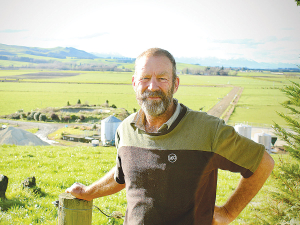Preparing for new freshwater plans
OPINION: With Freshwater Farm Plan (FWFP) regulations imminent, growers need practical, funded support now – not just more paperwork.
 Culverden farmer David Croft got his spreading equipment tested and calibrated by a Spreadmark accredited tester.
Culverden farmer David Croft got his spreading equipment tested and calibrated by a Spreadmark accredited tester.
With farmers now expected to produce Fresh Water Farm plans in addition to Farm Environment Plans, Culverden farmer David Croft decided to get his spreading equipment tested and calibrated by a Spreadmark accredited tester.
“We wanted to make sure we are spreading our nutrients correctly for our farm environment plan,” said Croft. “Also with the cost of fertiliser going up, it makes it quite a key area for us to save costs.”
Rather than a prohibitively complicated process, Croft said it was easy once he knew who to contact. Spread Test NZ’s Travis Churchill was the Canterbury contact, so organised the testing to be done on his farm. Other farmers also brought their machines to be tested at the same time. While they didn’t get Spreadmark certification they went through a similar process.
“We wanted to make sure we had our spreading width right,” said Croft. “Like any of these things there’s a costreward to it. We see it as an investment rather than an expense ($500 per spreader) because we get a payback on it. We also all learnt something from it.”
For Croft, the biggest lesson was that spinner speed is crucial.
“One of the farmers didn’t have a tachometer to check and it really upset his first pass with a horrible spread pattern. The spinners were too fast and were fracturing the urea.
“So it concentrated the product at the back of the spread and it didn’t fly as far.”
The calibration of the spreader between different product loads was also a key lesson, and because of different spreading patterns over the trays, Croft ended up altering his spreading width from 18 metres (urea) to 15 metres for NProtect.
Superphosphate was also an area of interest for Croft, who spreads his own.
“We do the one hectare soil samples and variable-rate phosphate applications, which is what got us interested in getting our spreader tested. Most people just do it for urea but we spread our own super too.”
Croft’s spreaders tested well but he queried the standard of the super, which showed to be too fine in the sieve box test. This required Croft to narrow up his spread pattern to 12 metres.
“I would highly recommend this to other farmers who are spreading their own product. As one of the biggest costs to farmers, we need to make sure we are getting bang for buck. We’d definitely do it again and currently plan to do it every two years.”
Primary sector leaders have welcomed the announcement of a Free Trade Agreement between India and New Zealand.
At Pāmu’s Kepler Farm in Manapouri, mating has wrapped up at the across-breed Beef Progeny Test.
More than 150 people turned up at Parliament recently to celebrate the 20th anniversary of Horticulture New Zealand (HortNZ).
Biosecurity New Zealand says Kiwis should continue to keep an eye out for yellow-legged hornets (Vespa velutina) over the holiday season.
The Push-Up Challenge, an event which combines mental health and fitness, is set to launch in New Zealand in 2026.
Fonterra has slashed another 50c off its milk price forecast as global milk flows shows no sign of easing.